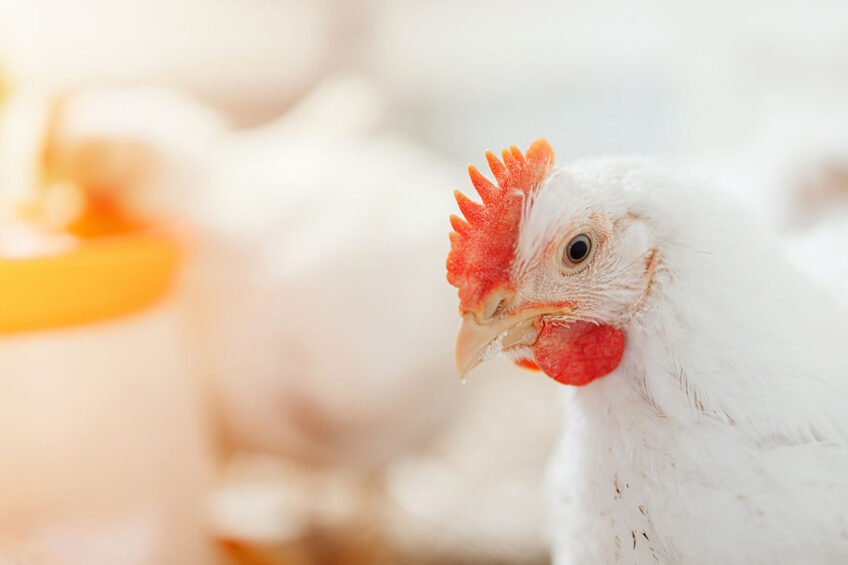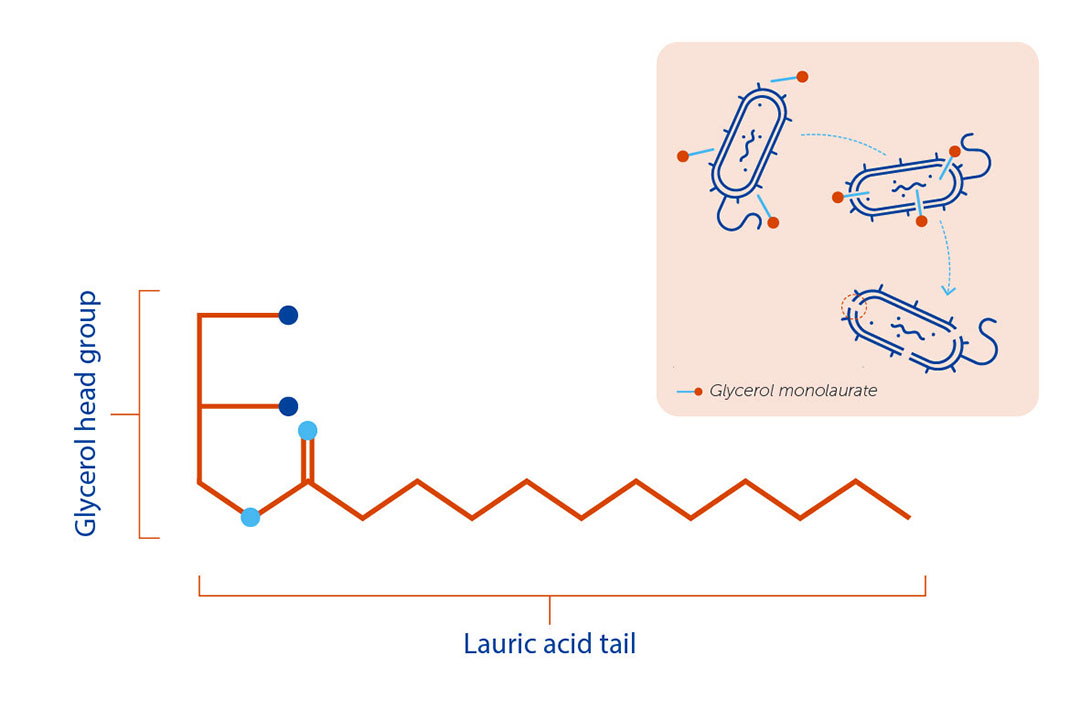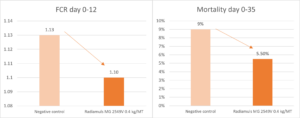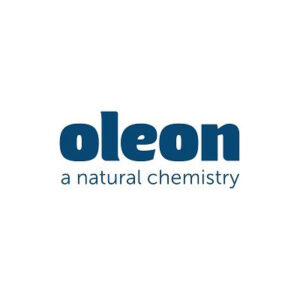Glycerol monolaurate to improve gut health and economic gains

Glycerol monolaurate has been observed to have positive effects on multiple performance parameters. In broilers it has shown to optimise FCR leading to economic gains.
What is Glycerol Monolaurate?
Glycerol Monolaurate (GML), also known as monolaurin, is a monoglyceride formed through the esterification of glycerol and lauric acid. Lauric acid is a fatty acid with 12 carbons (C12) that is derived from plant-based sources, such as palm kernel oil. GML is found in natural sources like human breast milk. In its pure form, GML is an off-white solid. The molecular structure of GML is a lauric fatty acid linked to the glycerol backbone at the sn-1 (alpha) position. It is known for its antimicrobial properties and beneficial effects on gut health. GML is produced from renewable resources and is compatible with the growing demand for sustainable feed additives
How does GML work?
The main benefit of GML is its antimicrobial properties. Its unique chemical structure, a glycerol head group attached to a lauric acid tail, makes it very effective. The glycerol backbone is hydrophilic, which means that it prefers an aqueous environment. The lauric acid is lipophilic and has a preference for a non-polar medium like a lipid environment (Figure 1). This particular structure allows the GML molecule to insert its lipophilic tail into the lipid envelope of some viruses or the cell membrane of Gram-positive bacteria. Through this insertion, the fat envelope or cell membrane structure of these microorganisms is disrupted and the ion exchange across the cell membrane is compromised. This leads to the disturbance of the overall microorganism metabolism and eventually to the destruction of the microorganism.
Figure 1 – Structure and mechanism of Glycerol Monolaurate.

In addition to its antimicrobial capabilities, GML supports gut health mainly through the activation of the mTOR pathway in enterocytes. Histologically, a healthy gut is characterised by, but not limited to, long healthy villi and shallow crypts. Oleon GML has shown the capability to improve the villi length to crypt depth ratio according to in vivo studies in broilers.
The combined antimicrobial power and ability to support gut health allows the animal to thrive and results in increased economic performance.”
Type of GML to use?
There are GML-based products on the market, which differ in concentration, physical form, or composition. Oleon offers Radiamuls MG 2549V, a minimum 90% GML with high alpha-mono content. This is an important characteristic, as the alpha mono content is seen as the most active form when considering the antimicrobial properties. This product comes in a free-flowing powder, free from any carriers or fillers. Due to its purity, it is the perfect product to be incorporated into premixes for poultry and swine.
Next to Radiamuls MG 2549V, which has a high GML concentration, Oleon offers Radiamuls MG 2440V. This is a similar high-quality and active GML, blended with a vegetable fat. Next to GML, Radiamuls MG 2440V also contains di- and trilaurate, which bring complementary physiological properties. The vegetable fat, which is used to convert GML into an easy and ready-to-use powder, bears a caloric value as well.
Data on GML
Over the past few years, there has been progress in the performance evaluation of short and medium chain monoglycerides as functional ingredients. The mechanism of GML is the subject of many scientific publications.
Oleon GML is both tested in vitro and in vivo (Figure 2). Based on MIC trials, we could prove that GML has excellent antimicrobial properties, especially against Gram-positive bacteria. At low concentrations, GML is able to inhibit the growth of multiple Gram-positive bacteria such as Streptococcus Suis and Clostridium Perfringens. The monoglyceride form is effective at lower concentrations compared to free lauric acid.
Figure 2- Glycerol Monolaurate in vivo.

In broilers, we observed a positive effect of GML on multiple performance parameters such as mortality and feed conversion ratio (FCR). Decreasing the mortality and optimising the FCR leads to economic gains. The pododermatitis scoring, which indicates the overall health status of broilers, also significantly improved in treatments that are receiving GML.


